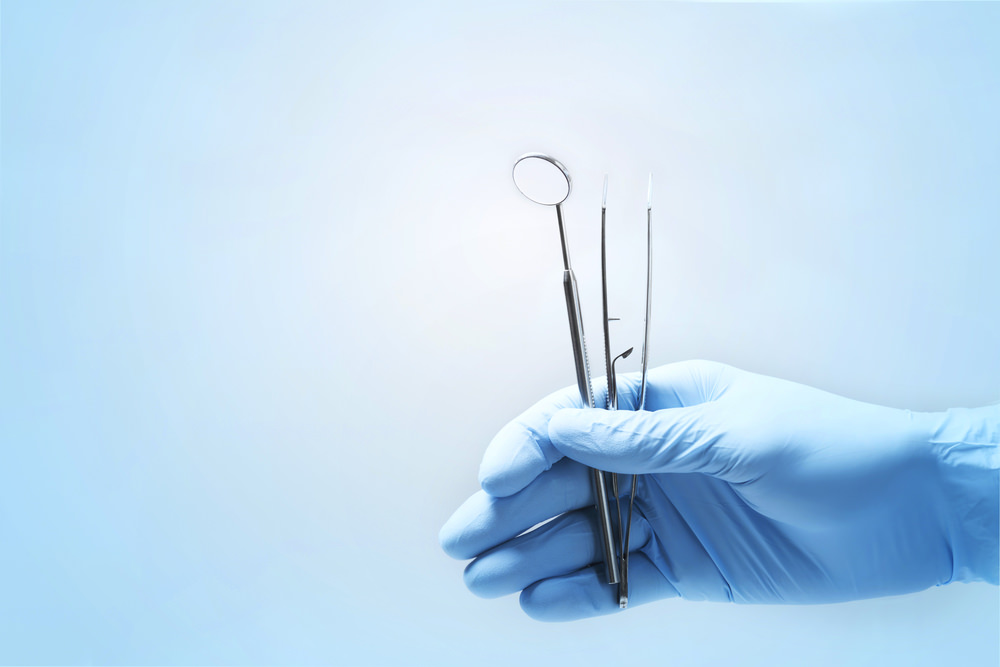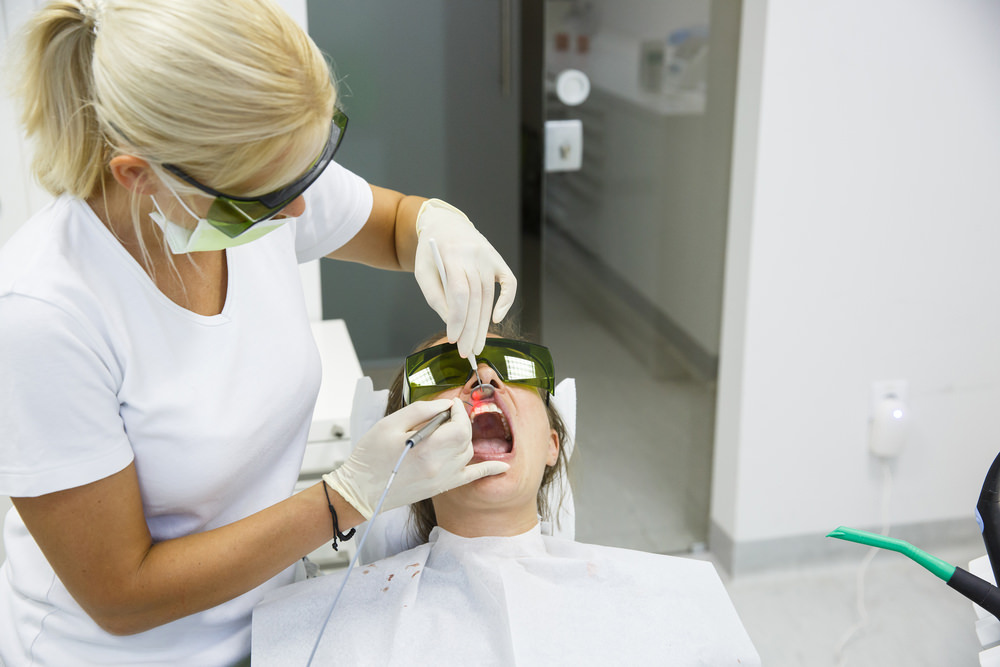What Can You do About TMJ Pain?
Feeling pain within your jaw and mouth can be unbearable at times, so asking your dentist “what can I do about TMJ pain?” is important.
Causes can vary a lot from a simple toothache to severe conditions that are debilitating. One of those conditions is what’s known as Temporomandibular Joint Disorder, or TMJD for short.
Found between the mandible and the temporal bone, they’re situated on either side of your skull and help connect the lower jawbone to the upper jaw. This joint is referred to as TMJ.
So what should you ask your dentist or professional medical practitioner about TMJ? The how what and why is a great place to start.
Below is an in-depth look at TMJD with some great videos as well!
The TMJ makes use of primary muscles to allow a wide range of movements suitable for eating, swallowing and even talking.
As time goes on, our body, like any other machine, tends to wear and tear.
If you feel an ache or can hear a clicking noise coming from your jaw, you may want to call your dentist.
Dysfunction or pain in the TMJ can be termed as an idiopathic disorder – the presence of which is spontaneous and origins unknown.
Temporomandibular joint disorders (TMJD) are the second highest contributing factor to orofacial pain.
The condition can be brought on due to muscle dysfunction or displacement of the TMJ.
Are You at Risk of a TMJ Disorder?
According to the Australian Journal of General Practice, the disorder has been observed in 60 – 70% of Australia’s population, with a majority of the demographic between the ages of 20 – 40 years.
Women are also seen as four times more susceptible to the disorder, but only 5 – 12% of the afflicted seek treatment.
How does TMJ develop?
With TMJ being a congenital disorder, you can have a genetic predisposition to the condition.
Osteoarthritis and rheumatoid arthritis are forms of arthritis that increase the risk of TMJD.
More commonly found if you are over 50 or so.
Bruxism or the involuntary grinding of the teeth, conscious or unconscious, also increases one’s chances of developing TMJD.
However, not all who are afflicted with bruxism are prone to TMJD, but prevention is better than cure.
If you can relate to any of the causes and symptoms mentioned here, do not hesitate to consult a professional.
Why does the TMJ Begin to dysfunction?
The main components of the TMJ are fibrous membranes, and fibrocartilaginous tissues with one articular disc used to divide the joint into two parts.
Tissues and ligaments are made up of cell layers which, although strong, can depreciate over time. If they get impaired, it can lead to a number of physical restrictions.
Erosion or displacement of the articular disc exerts extra pressure on the connective tissue every time you move your jaw, which will cause it to degenerate over time.
Here are some common reasons which may initiate the TMJD:
- Repetition of strenuous activities.
- Increase in stress levels.
- Altered joint function.
- Lack of cell regeneration.
- Excessive cell regeneration.
- Trauma sustained by jaw during injury.
- Impairment of connective tissue and ligaments.
- Unconscious grinding of teeth – Bruxism.
- Arthritis.
- Subluxation – partial dislocation.
- Fractures.
- Mandibular dislocation – jaw dislocation.
TMJD can be passed down genetically and cause major discomfort when ignored.
It can also progressively become worse if not properly treated.
Predispositions to TMJ Disorder
Aplasia of the mandible or cranial bone – defected development or absence of organ tissue
Hypoplasia – Inadequate formation and development of tissue/organ
Hyperplasia – Excessive growth of tissue
Dysplasia – abnormal tissue development within an existing type. This process may signify the future development of cancer.
Inflammatory Disorders
Synovitis – swelling of the synovial cavity
Capsulitis – swelling of the articular capsule
Myositis – swelling of muscles surrounding TMJ
Symptoms of TMJD?
If you or your loved one is afflicted with TMJD, they will complain about widespread orofacial pains such as in the face, jaw, neck and even ears and head.
People suffering from TMJD might also hear a clicking noise every time they open or close their jaws.
The noise can also graduate into grinding and popping.
You may also feel tenderness in your jaw which leads to pain and discomfort.
Everyday activities such as chewing and swallowing become difficult.
If left untreated, continued exposure to the discomfort can lead to severe headaches; migraines, and even earaches.
This is because our ears, nose, and throat are all connected.
If you have been noticing popping or grating noises every time you move the TMJ, but there is no pain or discomfort, you are not suffering from TMJD.
When Does it Become Necessary to Receive Treatment?
If your jaw ache has been consistent and opening and shutting your jaw is becoming an issue, make an appointment with a medical professional immediately.
Your doctor or dentist may recommend a TMJ specialist if that is your diagnosis.
You can discuss a number of rehabilitation options available.
What to Ask Your Medical Professional About TMJ
As mentioned earlier, professionals cannot pinpoint the cause of TMJD to a specific location.
Due to its idiopathic nature and the many simultaneous functions that take place, TMJ pain can arise from a multitude of factors.
Your medical professional will take a few tests and ask questions before explaining the cause of your troubles to you.
The best path to recovery is through understanding.
Ask your consultant to help you understand where your pain stems from and its far-reaching effects.
What Causes My TMJD?
The TMJ helps attach the lower jaw’s ball-like structure, into the skull’s socket.
The tissue lines the bone structure to reduce friction and encourages seamless jaw function.
Tissue Mitigation
Most of the trouble arises in these main areas. Your connective tissue may be wearing out with age, causing greater chances and instances of friction.
This process will result in pain and a ‘clicking’ noise.
More so, moving your jaw beyond a certain extent may also become impossible depending on the extent of damage suffered by the TMJ.
Muscle Pain
Muscle pain usually begins from the cheek muscles and the temples.
Since the affected area is a muscle, the pain can travel to other surrounding muscles as well.
Swelling or stiffness of muscles is the underlying reason for muscle pain in TMJD.
The pain can be due to an injury or even bruxism.
Due to the complex network of muscles in our body, if left untreated the soreness can spread to the neck and back as well.
What Kind of Treatment do I Need?
As the TMJD can stem from various factors, the treatment will depend on the specific type of pain and extent to which it is felt.
The initial step after testing is to reduce the amount of the pain the patient is under.
In cases of swelling, you may get the hot and cold compress treatment or even anti-inflammatory medications.
Severe instances of TMJ will need physical therapy or even surgery.
Will TMJ Affect My Daily Activities?
Day to day activities such as maintaining your oral hygiene routine can become quite painful for those suffering from TMJ.
This is because activities such as brushing and flossing require opening and closing the jaw, as well as holding it in one position for long durations.
To make your life easier, you should:
- Use soft-bristled toothbrushes.
- Opt for water flossers or a rubber tip stimulator instead of the traditional flossing techniques.
- Use an antiseptic mouthwash.
- Use cold and hot compresses after dental procedures.
- Communicate your discomfort and pain to your medical professional.
If TMJ Encompasses More than One Condition, How is a Diagnosis Reached?
For complicated cases of TMJ, professionals take a team approach towards understanding the particularities of the condition.
The team can consist of a dentist, a doctor and an oral maxillofacial surgeon and even pain specialists.
Will I need surgery for TMJD?
Although not commonly needed for TMJD, rare cases can require surgery.
Surgery is also the last option for patients who have exhausted all other methods.
Many oral and maxillofacial surgeries are available, such as:
Arthrocentesis
This minimally invasive surgery requires local anesthesia and will have you back up on your feet in just a day or two.
Surgeons insert a camera through an incision near the ear which allows them to identify what needs to be corrected.
Arthroplasty
This extensive surgery needs a month, and a half of recovery and the patient is required to stay at the hospital for one to two nights.
The incision made for this surgery is longer and exposes the joint area.
This incision allows surgeons to remove the extra growth, bone spurs or even adhesions that are causing the impairment.
In very serious cases, when the jaw is not structurally adequate or sound for the function it needs to perform, professionals will consider a total joint replacement.
The surgery is extensive and requires at least 2 – 3 months of recovery before the patient can get back to regular activities.
Can I Try Other Pain Relieving Techniques Instead of Medication?
Most of your treatment will depend on your TMJ’s specific requirements.
People consider acupuncture as a viable option for short-term pain relief.
However, there are many aspects involved in the success and failure of an acupuncture session, and instead of being used as the only method in pain relief, you should use it as a complementary measure.
If you choose to opt for acupuncture, please make sure your practitioner is familiar with the functions, causes and effective management of craniofacial pain.
What Kind of Exercises Can I Look into to Slow the Onset of TMJ?
Those predisposed to TMJ genetically should engage in preventative measures to help their jaw grow stronger.
Many exercises are recommended to help fortify the jaw structure and reduce friction between the ball and socket of the joint.
Relaxed jaw exercises:
During the day many of us may involuntarily clench our teeth together when we close our mouths.
This process exerts stress onto your jaw for prolonged periods.
You can practice resting the tongue behind the front teeth while it naturally touches the top of your mouth.
Make sure you do not clench or bite down on your teeth during this activity.
Practice this as much as you can to prevent involuntary clenching and stress placed on the muscles.
Goldfish Exercises (Partial and Full)
For this exercise, you will want to locate the position of your TMJ.
The best way to do this is to run your finger down from the temple.
After passing the bump created next to your cheekbone, you will come across a slightly indented space, in front of your outer ear structure.
Make sure to stay close to the edge of your face’s frame when doing this.
Once you find the indentation, press firmly and move your jaw slightly.
If you can feel your joint moving, congratulations!
Now you will want to place your other index finger on your chin.
Partial
Resume the relaxed jaw position while keeping your fingers as instructed earlier.
Slowly lower your jaw halfway and close it.
Those afflicted with TMJ will face mild resistance but no pain.
Alternate between both joints and practice this six times to complete one set.
For the best results, repeat the set six times every day.
Full
Place both fingers on the location of your joints and open your mouth completely before closing and repeating.
Six cycles of this will complete one set. Ideally, you should go for six sets a day.
Can Removing Tonsils Induce TMJ?
While the removal of your tonsils does not have any effect on your TMJ, the process of removal can cause certain problems.
Intubation during tonsillitis removal does cause joint disorders in some cases.
The intubation requires the patients’ mouth to remain open wide for prolonged passages of time.
Any invasive surgery that needs the insertion of an endotracheal tube can stretch out the TMJ.
You can improve this condition by applying pain medication or low heat to the inflamed areas.
Avoid chewing on hard food matter such as apples and candy, and take up a soft diet for a few weeks which includes fluids and soft foods such as mashed bananas.
Temporomandibular joint disorders can start small or just appear full-fledged one day.
By regularly exercising your jaw you can lower the symptoms and the discomfort caused by TMJ.
Misbalances in the composition of the body and some autoimmune diseases can also induce TMJ as these conditions attack connective tissues and joints.
You can choose from a range of lifestyle and medical choices to help you conquer TMJ.
Conclusion
Temporomandibular Joint Disorder is a common condition which does affect many people.
If you are experiencing pain in your jaw or mouth make an appointment to see your friendly dentist.
This first step will allow you to explore the options that are available to you so you can reduce the pain and find a possible solution as soon as possible.
Do you have TMJD? Share your thoughts in the comment section below!
By Anthony Cade
Created at October 10, 2018, Updated at January 25, 2025





